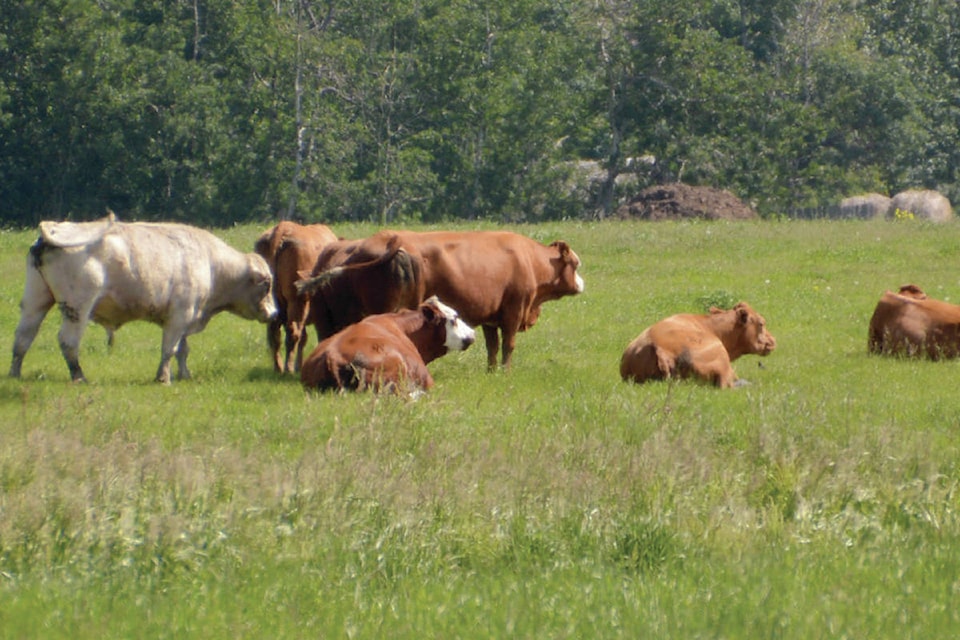Without ranching, 100 Mile House and the South Cariboo would look a lot different than it does today. Just ask the region’s MLA, Donna Barnett.
“Without the ranching community, we would have less of an economy. It is a very integral part of the economy, always. It’s not as great as it used to be, over time regulatory regimes and rules and regulations have basically forced a lot of people to move on from the ranching community,” she said.
The ranching business in the South Cariboo is primarily beef. Some ranches have bison, lambs and other livestock, but the 100 Mile area has always been a cattle town.
“We don’t grow vegetables - some people do but it’s difficult because of the topography here and when you’re 3,500 feet above sea level, you’re not growing tomatoes very reasonable. There have been additions to the agricultural industry over the years. People have been very successful in some areas around the Cariboo to grow vegetables at a certain time of the year - farmer’s markets and that type of thing.
Basically, it’s ranching… We’ve had all the diversity but the biggest thing is cattle and it’s been forever and it will hopefully stay here forever.”
Barnett remembers when she first came to 100 Mile House, when it was just a few homes and miles of ranching community.
“When I look at the 108 for example, that used to be a huge ranch back in the day - a beautiful ranch -and of course it got sold and sub-divided, so big ranches like that we lost - but we still have some.
However, ranching is a tough industry to be in. When beef goes to market, sellers only get so much per pound. Recent regulation and rule changes and more recently, land use issues, have made the business of running a ranch more challenging.
“Land use issues are going to play a big part in what you do, not just in the ranching industry, but all resource industries and so in working together collaboratively, maybe we’ll grow the beef industry,” said Barnett. “But at the end of the day, you have to look at how far do you have to transport it, what are the costs, etc. But it has been a huge part of this area forever.”
Due to all these changes in the agricultural industry, it’s hard to keep the younger generations of family members on the ranch and farm. However, it’s not just because of changes in the industry, but also trends in other industries.
“When you can go to the oil patch or something like that and make $150,000 and work so many days on and so many days off, what encouragement is there to work 24/7 as their parents have. But it’s a better way of life, you know. It’s quality and I think we as a society have lost some of that,” said Barnett.
Barnett said that what she found the scariest part of the state of ranching, is family operations being sold to big corporations and mega ranches.
“There is nothing wrong big corporations. They’re doing their thing -they create food, they create employment - but it’s still not the good ol’ family farm… We’re losing those and that’s too bad.”
Ranching, Barnett said, also had a say in the social fabric of the community as it developed into what it is now. She mentioned cattlemen societies and cowbelles (groups of women who promote agriculture and ranching), groups that are shrinking. She also mentioned 4-H clubs, particularly the ones in Lone Butte, Canim Lake and Clinton.
” Your 4-H clubs are so important to the future of the industry and we’re so fortunate to have a great Lone Butte 4-H club. Canim Lake has a 4-H club, but basically, those are the only two within the South Cariboo.
Lone Butte’s 4-H club has been growing over the years and I know quite a few of them. I do a little bit of work for them and Canim Lake has always had a great 4-H club. I think that’s something we have to promote more and more and keep the young people interested in what really feeds them and reward them for what they do because it’s a more family-type atmosphere and I think it’s more socializing with things on your mind like discussing animals, discussing your land and how you look after it, to respect the land.”
